On the taste trail: Malaysian-style thunder tea rice and fried yong tau foo after a scenic Punggol walk
Mediacorp GOLD 905’s Denise Tan explores the North Eastern Riverine Loop from Coney Island to Punggol Waterway in search of Hakka Leipopo’s signature heritage dishes.
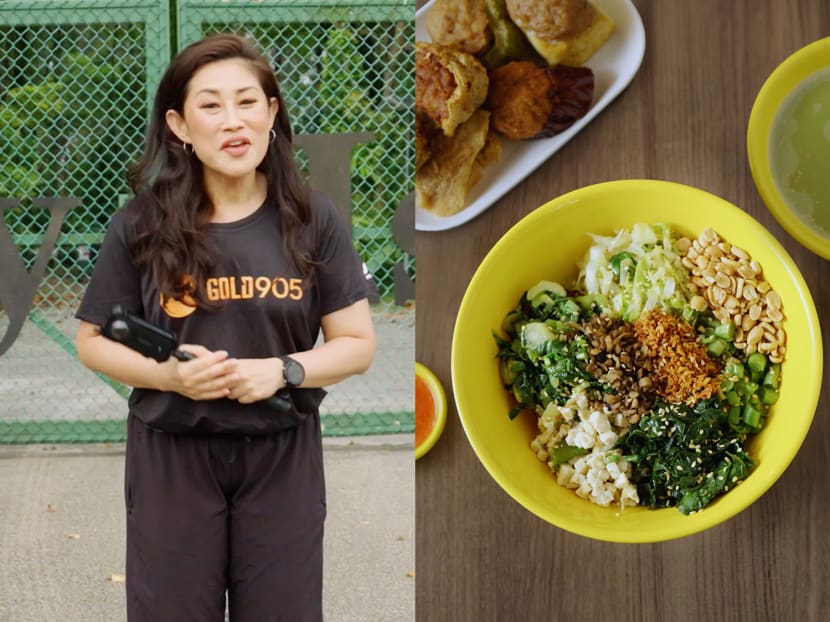
Mediacorp GOLD 905’s Denise Tan explores the North Eastern Riverine Loop from Coney Island to Punggol Waterway in search of Hakka Leipopo’s thunder tea rice and yong tau foo. (Photos: Abundant Productions)

This audio is generated by an AI tool.
This week’s journey takes us through a scenic section of the North Eastern Riverine Loop in search of quintessentially Hakka classics like thunder tea rice and yong tau foo. Our roughly 50-minute, 4km walk begins at the western entrance of Coney Island near Punggol Settlement.
Following the Punggol Promenade Nature Walk to Punggol Promenade Bridge, we’ll make our way inland past the Wave Bridge and continue alongside Singapore’s longest man-made waterway, the 4.2km Punggol Waterway. (Fun fact: Linking Sungei Punggol and Sungei Serangoon, it holds as much water as 200 Olympic-sized pools and is bordered by nearly 5,000 trees.)
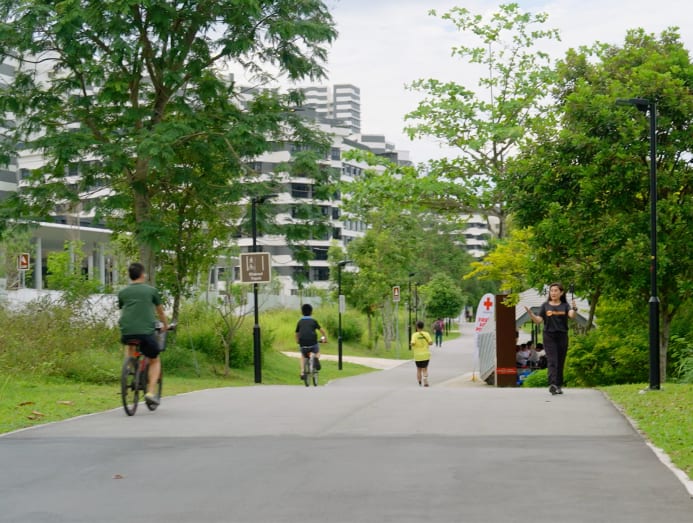

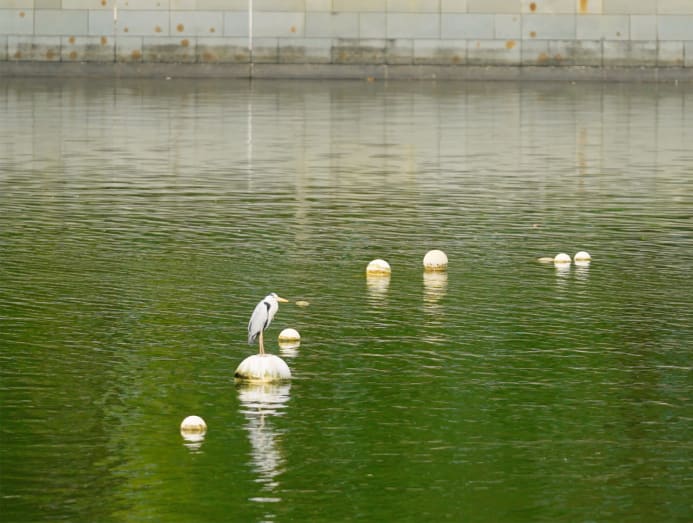
Don’t miss the Kelong Bridge with its unique stilt design, a nod to Punggol’s fishing village past. SAFRA Punggol is another prominent landmark before we cross the Adventure Bridge into Punggol Waterway Park.
From there, it’s just a short 5-minute stroll to Hakka Leipopo at One Punggol Hawker Centre. The brainchild of Kumiko Tan, 44 and her husband Khoo, also 44, their brand was built on family memories.
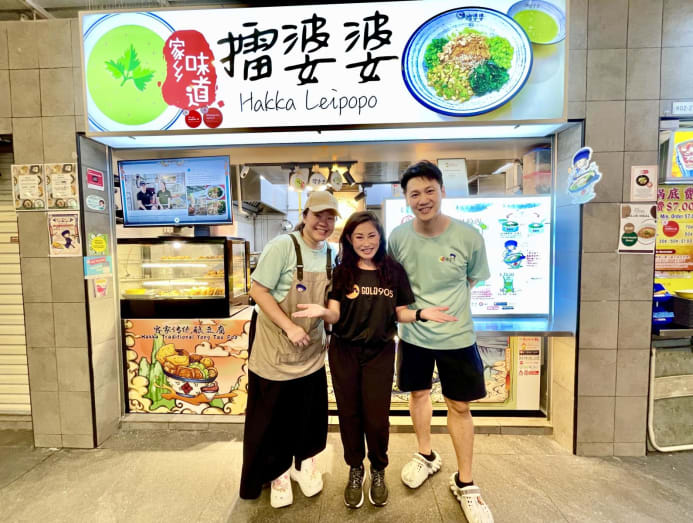
“I was originally a piano teacher, but my journey into Hakka cuisine began because of my husband. He has always loved lei cha fan (thunder tea rice) since childhood, but he could never find the exact taste he remembered,” Kumiko shared.
It wasn’t as simple as asking for the recipe from her mother-in-law, who did not have anything precise written down.
“She told me, ‘I don’t remember – I just agak-agak (estimate)’,” Kumiko said, adding that her mother-in-law also used to grind ingredients the traditional way with a guava stick in a stone bowl. Khoo helped her when he was younger, which made his yearning for his favourite childhood dish all the stronger.
It took Kumiko two years of experimenting to capture the nostalgic taste Khoo and his Hakka mother could be proud of. Both husband and wife are originally from Johor Bahru, which explains why Khoo couldn’t satisfy his lei cha fan craving here in Singapore.
“Our lei cha fan is more Malaysian-style because we use dried shrimp (hae bee), not ikan billis. We have to fry the hae bee at a very high temperature to make it crispy, but not oily,” Kumiko revealed.
As for her mother-in-law’s pestle and mortar, Kumiko has since inherited it for home use, a symbol of her husband’s heritage and her hard work. Encouraged by friends, she first began selling lei cha fan as a passion project in 2019, arranging customer pickups with her two young children in tow.
“One was a baby back then, the other was about six years old. I would use our stroller to deliver the lei cha,” Kumiko said with a laugh.
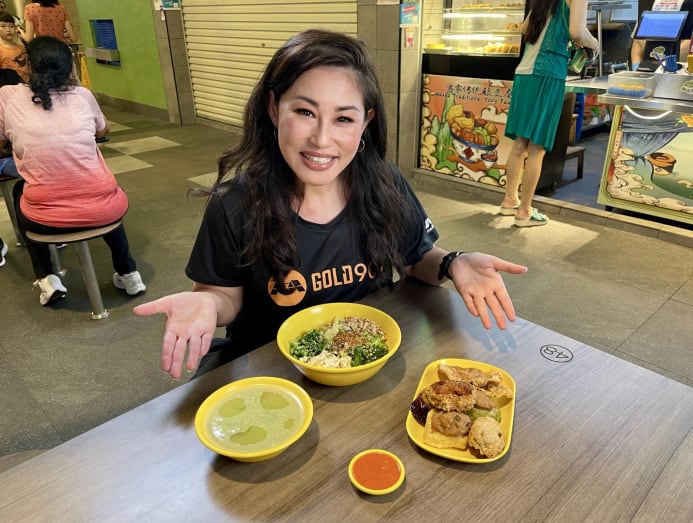
The COVID-19 pandemic turned out to be a blessing in disguise for the couple. Homesick Malaysians and other housebound customers boosted demand, prompting Khoo and Kumiko to open their first Hakka Leipopo stall in December 2021.
Available in white rice, brown rice, or low-carb rice-free versions, their lei cha fan is a riot of textures and tastes. Toppings of salty-sweet chye poh (preserved radish), cabbage, roasted peanuts, toasted sesame seeds and crispy hae bee add a deeply savoury crunch.

Kumiko takes particular pride in her fresh vegetable selection, lovingly fried with garlic and hae bee for fragrance. There’s chye sim from Cameron Highlands (“because it's not bitter and the taste is better”), French beans (“sweeter and crunchier than long beans”), and what she calls non-negotiables for authenticity – tau kwa (firm tofu) stir fried with leek and pucuk manis (mani cai, or sweet leaf, which is “a must for its sweet aftertaste”).
My order of brown rice lei cha fan cost an extra 50 cents – fair trade for more fibre and nutrients. Digging into my colourful garden in a bowl, I discovered it was essentially two meals in one. Kumiko and Khoo recommended I enjoy it “dry” first, then with the herbal soup, or “tea”.

True to its name, it certainly brought the thunder. A tasty green tempest of mint and Thai sweet basil blended with roasted peanuts, the smooth and creamy lei cha paste came alive with a splash of hot water.
“We use more peanuts to balance out the herbs, so the taste isn’t so strong,” Kumiko explained. “Ours is more harmonious because we don’t over-emphasise any of the ingredients.”
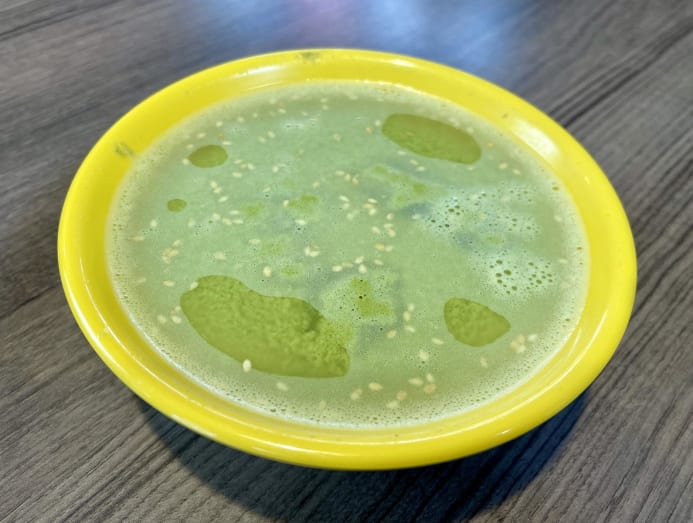
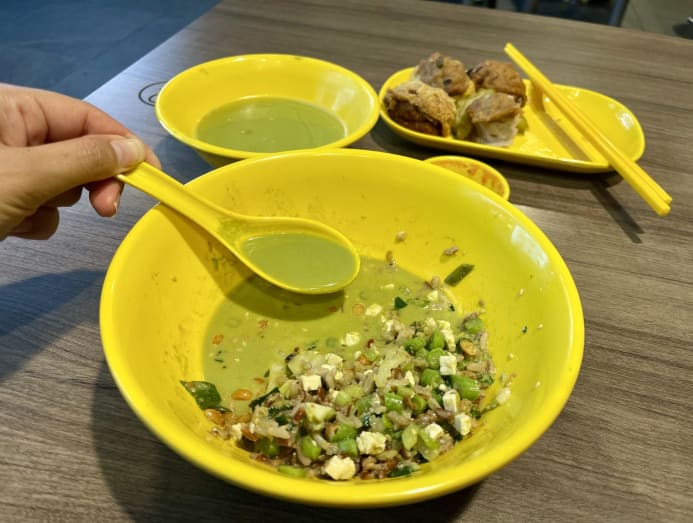
The soupy downpour of hot thunder tea transformed crunch into lush, porridge-like comfort, flooding the bowl with layers of flavour. Rich nuttiness from the brown rice, sesame seeds and peanuts mellowed the greens, leaving behind just a gentle, healing whisper of herbs.
Bonus: You can take the thunder home too – Hakka Leipopo’s signature lei cha sauce comes in handy sachets (S$12 for eight).
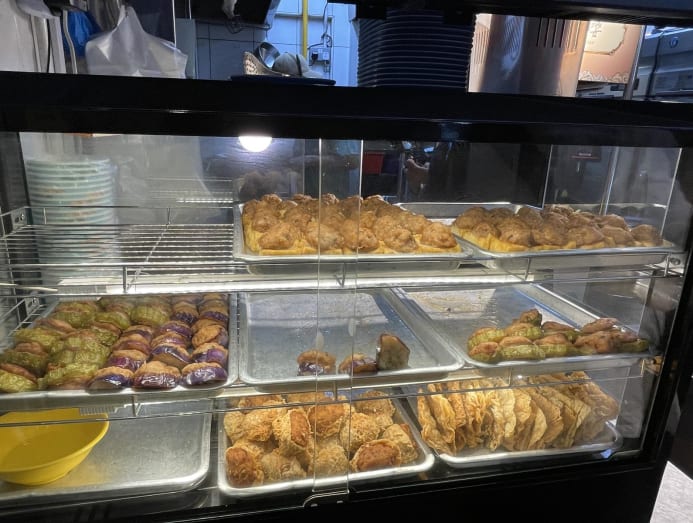
The lei cha fan was more than nice, but I also needed a little naughty. Enter another Hakka classic: Yong tau foo. Each indulgent piece – brinjal, bitter gourd, tau kwa, tau pok (tofu puff) and tau kee (bean curd skin) – was generously stuffed to bursting with a juicy, chunky mix of fresh minced pork and mackerel, then deep-fried till golden and crisp.
For dipping, their house-made garlic-vinegar-chilli sauce was aromatic and addictively spicy. It was so good I eschewed tradition and I shamelessly swirled some into my lei cha fan too.
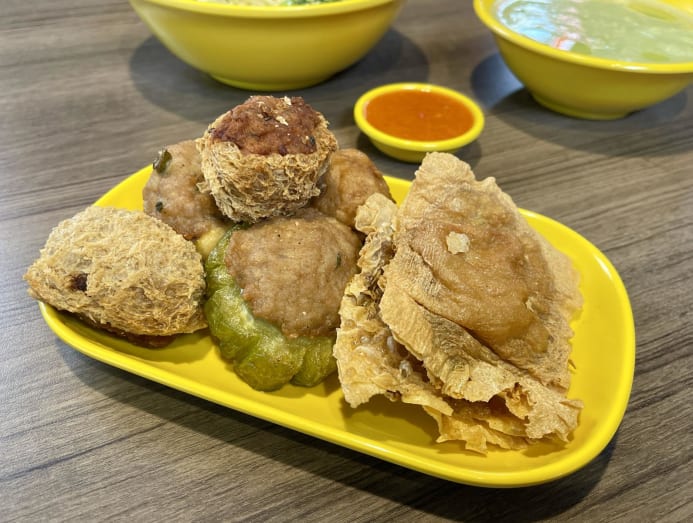
Individual pieces of yong tau foo cost S$1.20 each, but for big eaters, the Set B combo of lei cha fan with yong tau foo (S$11.70) offers more bang for buck.
“It gives you seven pieces of yong tau foo – buy six, get one free – so it’s more worth it,” Kumiko agreed.
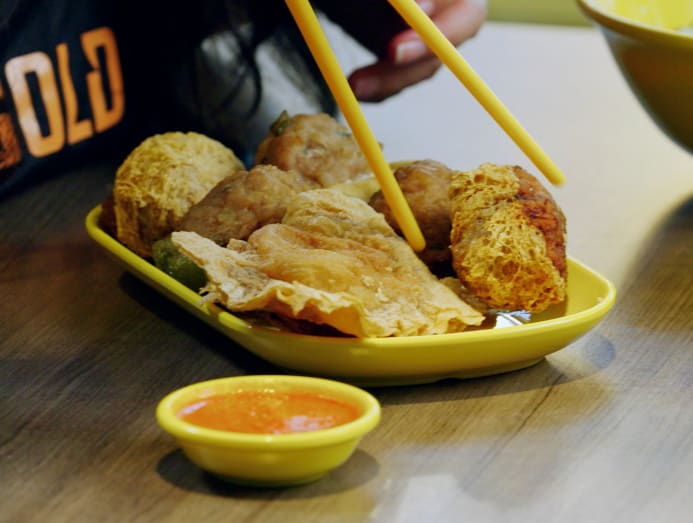
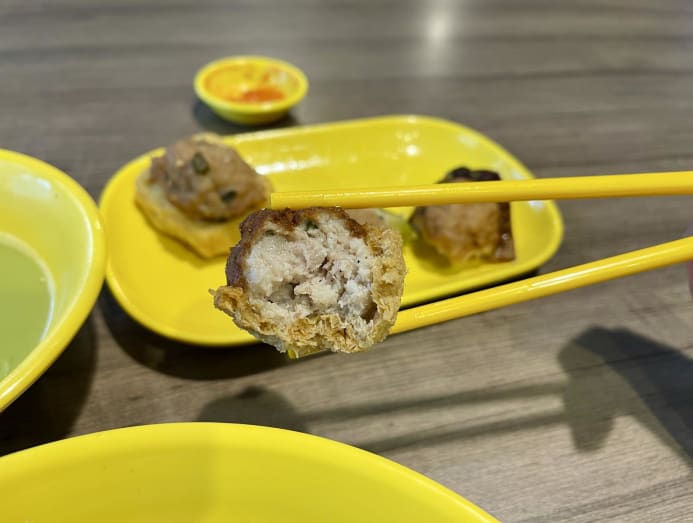
After enjoying the storm of thunder tea flavours, that was the silver lining. Despite using costlier, high-quality ingredients, prices are kept wallet-friendly.
“We’ve maintained the price of lei cha fan (with white rice) at S$5. I think it’s quite reasonable for a big portion,” Kumiko enthused. “Because there are many vegetables, it’s like good fortune. So on the seventh day of Chinese New Year, it’s considered auspicious to eat lei cha.”
A fitting sentiment for their Punggol location – in Malay, the name refers to the act of hurling sticks into trees to harvest fruit. Just like the neighbourhood, Hakka Leipopo’s story is rooted in a bounty of flavour and family history.
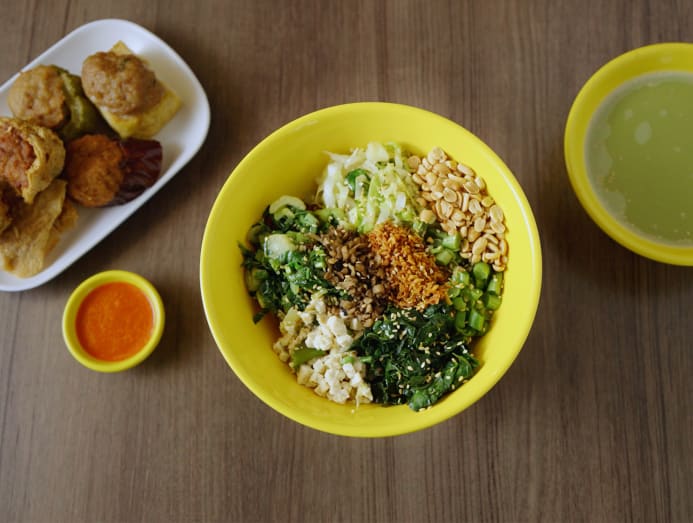
Kumiko and Khoo have been together since they were 16 and nearly three decades on, their desire to spread their shared Hakka heritage through home-style dishes – just like Popo (grandma) used to make – has blossomed into something special.
From a humble home-based business to three thriving stalls in Bukit Merah View, Anchorvale Village and One Punggol, their journey has been a true labour of love. But they’re not done yet.
“We hope that we can expand,” Kumiko confided. “Just one more stall!”
With loyal customers who have supported them since the stroller delivery days and a Singapore Enterprising Hawker Award under their belt, their future looks as abundant as their food.
Hakka Leipopo is located at One Punggol Hawker Centre, #02-26, 1 Punggol Drive, Singapore 828629. It’s open 10am to 4.30pm on Thursday; 10am to 7.30pm on Tuesday, Wednesday and Friday through Sunday. It’s closed on Mondays.
Catch Makan Kakis with Denise Tan every Thursday from 11am on MediaCorp GOLD 905.











